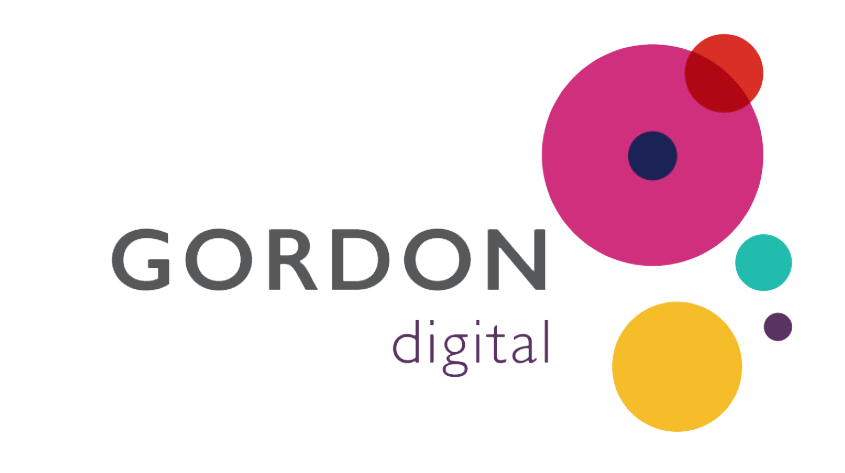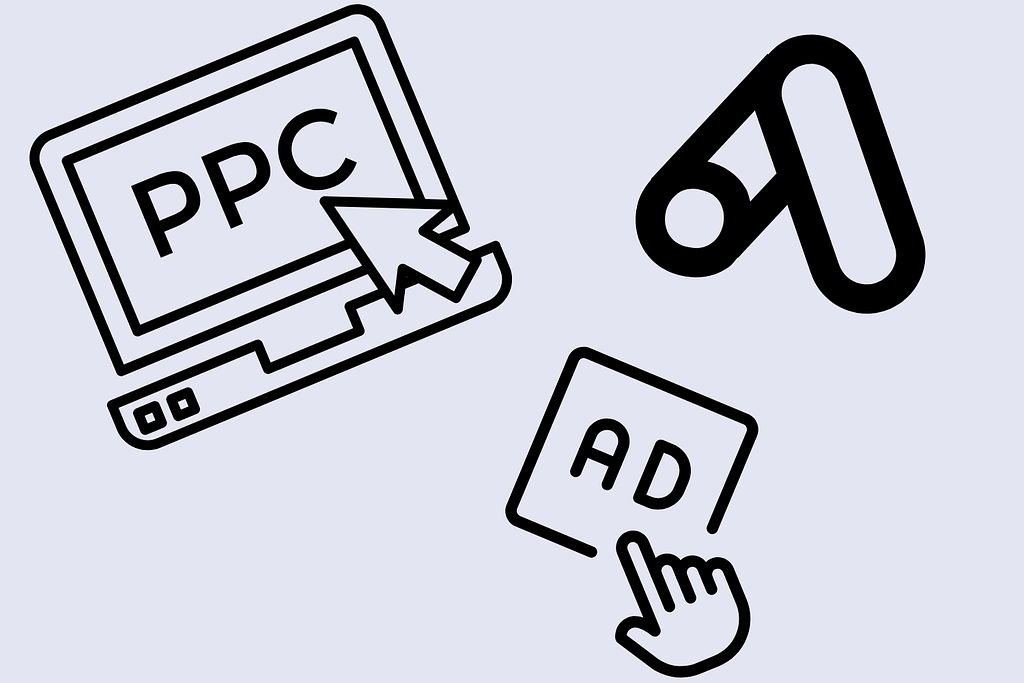
Key Takeaways
- PPC stands for Pay Per Click. It’s a form of bidding that can be used when you are running paid advertising campaigns on search engines, social media websites and other platforms.
- Paid search or SEM (Search Engine Marketing) is a type of paid advertising that shows up on search engines like Google and Bing.
- Paid search ads come in many different forms, including text-based ads, shopping ads and maps ads.
- Using paid search campaigns can increase your brand visibility, grow website traffic, generate conversions, attract qualified leads and provide useful data for growing your business.
What is Paid Search?
Paid search is a digital marketing strategy that refers to paid advertising that can be placed on search engines like Google and Bing. Paid search ads are displayed on Search Engine Results Pages (SERPs).
Back in the day, paid search ads were text-based and they only showed up as part of the standard search results.
These days, search engines like Google have gotten smarter, and they now serve ads right across the search experience. Users now see paid search ads in Google Search, Images, Maps, Shopping and more.
That provides great flexibility for advertisers and a better user-experience for customers!
Are Paid Search and PPC The Same Thing?
In digital marketing, people often use “paid search” and “PPC” interchangeably. But to be clear, paid search is a broader term. It covers not just PPC but also includes various paid media services like social media ads, Google Ads, and more.
“Paid search” typically refers to all types of ads that can be placed on SERPs.
There are dozens of types of ads. The one thing they all have in common is that advertisers have to pay for the ad space.
You can pay for ad space using a variety of bidding strategies. The traditional strategy is Pay-per-click bidding. With PPC, you only pay when a user clicks on your ad. This method prioritises engagement and website traffic instead of impressions or ‘views’ of your ad, as it’s the former that ultimately leads to conversions.
If you’re running paid search ads on Google, you can opt for any of the following bid strategies:
- Cost Per Click (CPC) – This is Google’s term for PPC ads. With CPC, you only pay when a user clicks on the ad. Google offers manual CPC bidding, but it also offers automated strategies that are enhanced by Google’s AI.
- Target Cost Per Acquisition (CPA) – Target CPA is an automated bidding strategy that’s designed to get as many conversions as possible within your budget. You tell Google how much you’re willing to pay for each conversion, and Google will automatically adjust your CPC bids to meet your target CPA.
- Target Return On Ad Spend (ROAS) – With Target ROAS, you can dictate how much return on investment you want from your ads. For example, if you want to earn $5 for every $1 you spend, you can set your target ROAS to 500%. Google then automatically adjusts bids to achieve your goal.
- Maximise Clicks – This does exactly what it sounds like. Google automatically adjusts your bids to get as many clicks as possible within your budget. The downside is that Google is so focused on getting clicks that it may not actively lead to conversions.
- Maximise Conversions – Clicks are good, but conversions are better. With the maximise conversions strategy, Google adjusts your bids to get the highest number of conversions within your budget.
- Target Impression Share – Showing up in the search results is half the battle. If you’re competing with other businesses, you can use target impression share to ensure your ads are being displayed at the top of the page. This may not generate clicks or conversions, but it helps with brand awareness and competitiveness.
Your bid strategy depends on your goals.
If you want to increase clicks and conversions, PPC ads are a good choice. If you want to increase brand awareness or prevent competitors from showing up when people search for your company, a strategy like Target Impression Share may be better.
What Are The Different Kinds of Paid Search and What Do They Look Like?
If you’ve used Google lately, you’ve probably noticed there are lots of ads mixed in with the organic search results.
The way people use search engines has evolved over time. Google has also evolved to keep up, and it’s constantly experimenting with new ad formats and placements.
For Google, ads represent a huge chunk of their revenue. But ads can also be relevant to users, so Google does its best to place ads that provide the information, products and services its customers are searching for.
For advertisers, this means that you have access to more types of paid search ads than ever before!
Text-Based Ads
Text-based ads are a staple of paid search. On Google, they can appear above or below the organic search results. They usually look something like this:
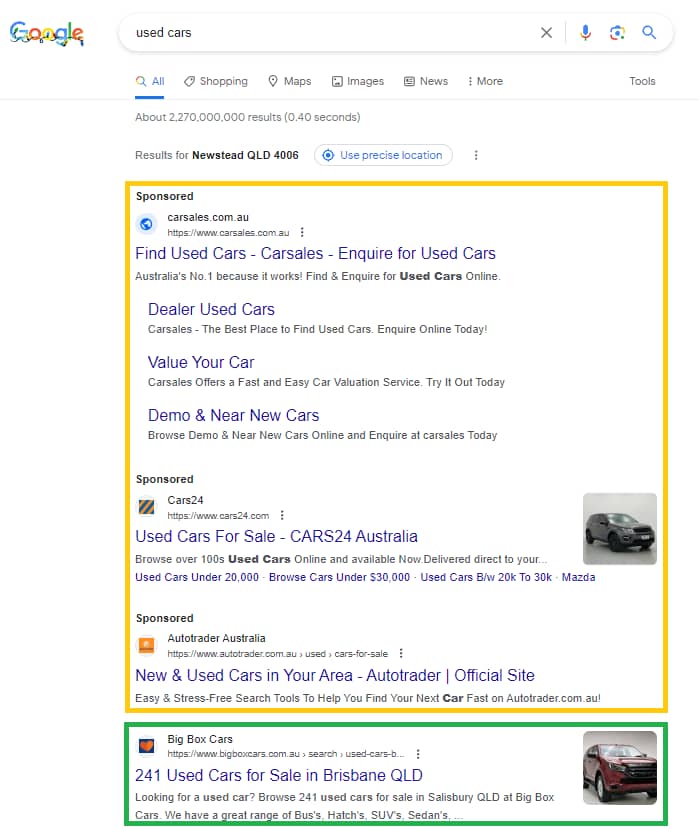
The search results highlighted in yellow are all marked “Sponsored.” This means they’re paid search ads. These appear above the first organic search result, which is highlighted in green.
Text-based ads can also appear at the bottom of the page:
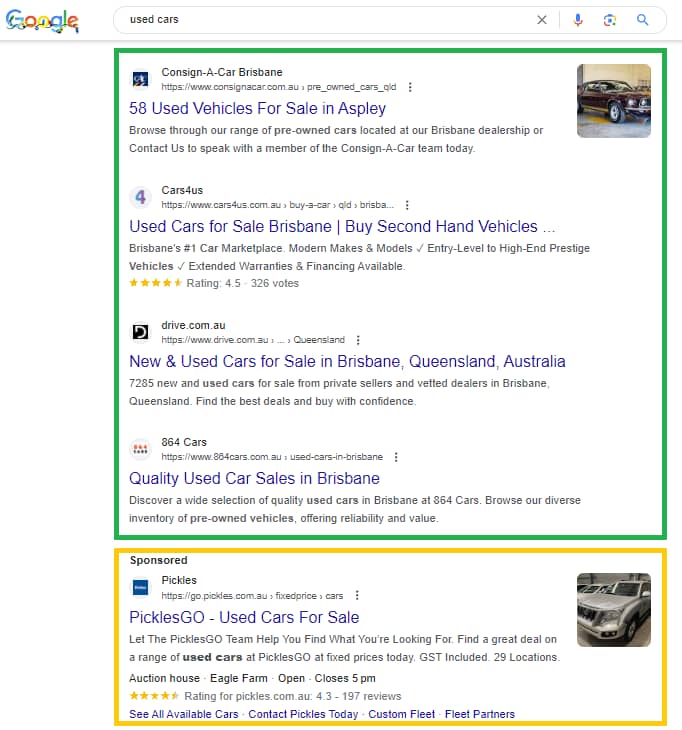
Note that Google is now moving to an infinite scroll model for its search results. Ads that traditionally appeared at the “bottom” of the page will now appear during your scroll through the organic search results.
Shopping Ads
Shopping Ads are a specialised type of paid search advertising.
These ads serve product listings directly in the search results. Shopping Ads can display the item name, description and pricing. This is intended to streamline the customer buying journey and help users compare similar products.
Shopping Ads are mostly displayed on the “Shopping” search tab:
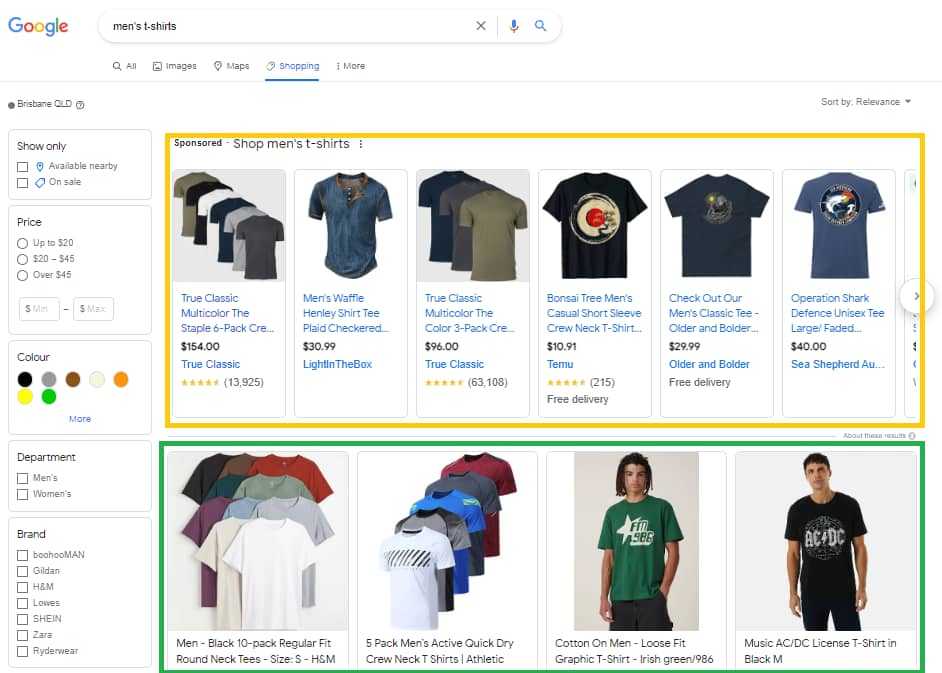
The listings highlighted in yellow are paid search ads. The listings highlighted in green are organic search results that match the query “men’s t-shirts.”
Shopping Ads can also be displayed amongst Google’s Search and Image search results:
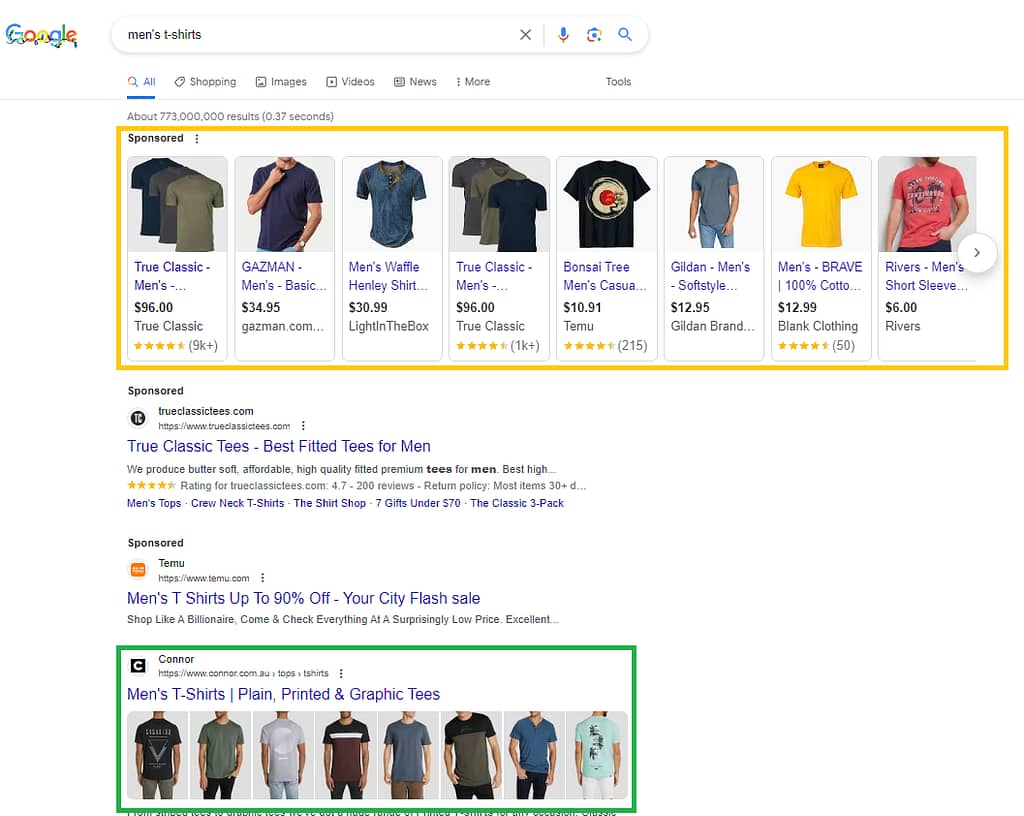
It’s common for Shopping Ads to be displayed as part of the results if the search query contains commercial intent. For instance, someone searching for “men’s t-shirts” is probably looking to buy a product, so Google includes Shopping Ads.
On the other hand, searching for “men’s t-shirts review” returns informational results, with the Shopping Ads reduced to a small block off to the side:
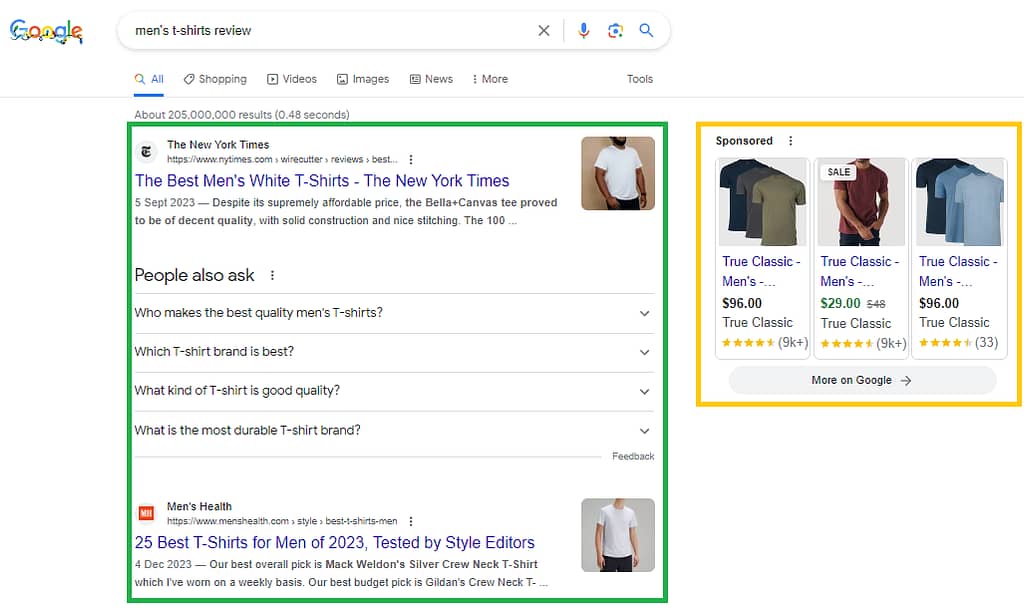
Maps Ads
Last but not least, we have paid search ads that are displayed as part of Google’s Maps results. These types of ads are typically displayed when a user searches for something location-specific.
For example, the search “restaurants in Brisbane” returns a number of paid search results:
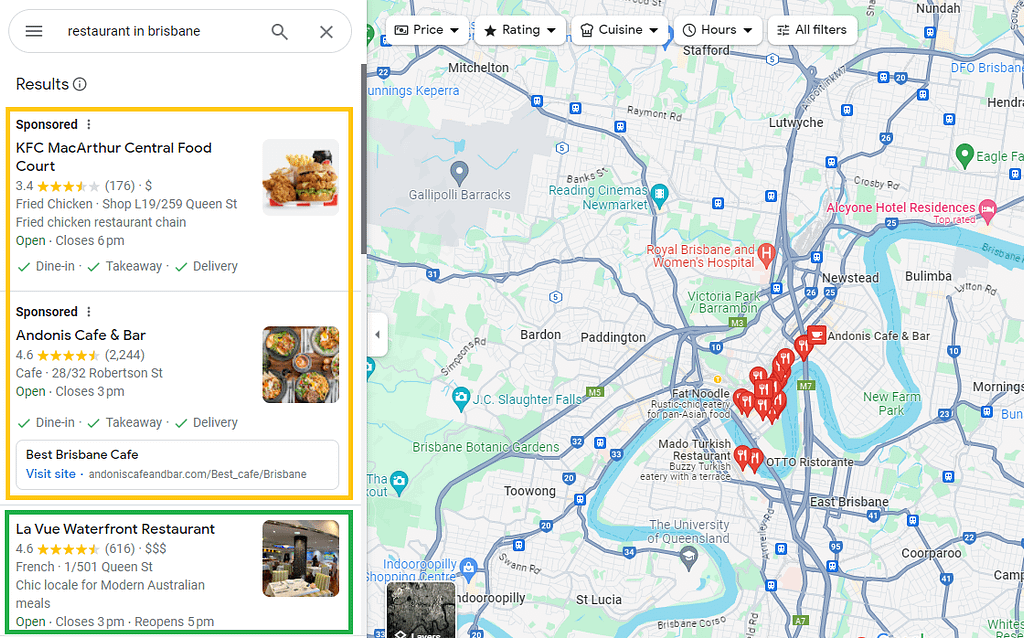
The Benefits of Using Paid Search Strategies
Paid search is one of the oldest and most effective digital marketing strategies!
Whether you opt for PPC bidding or a totally different approach, paid search ads can help you achieve your business goals. Paid search strategies come with a few major benefits:
1. Brand Visibility
Search Engine Results Pages are competitive spaces.
About 68% of all online experiences begin with a search engine. Billions of potential customers are using search engines every day, and you have to be visible if you want to attract their attention.
One of the best ways to increase visibility is with an SEO campaign. SEO tweaks your website so that it shows up in the results when users are searching. But SEO can take months to become effective, and there are no guarantees.
If you want to increase visibility quickly, paid search is the way to go.
With paid search, you can run ads that will be displayed at the top of Google without having to do months of SEO work. As long as you are willing to create good ads, optimise your campaigns and pay for the ad placement, you can appear at the top of the page right away.
This is even more effective when you run paid search campaigns alongside SEO.
Google no longer displays simple text results. When you perform a search, there’s a high likelihood that you’ll see text results, maps, images, related questions and other rich features.
The more times your website shows up in the search results and rich features, the more visible you are, and the more likely a user is to click on your website.
In that sense, we can use paid search to complement the rest of our digital marketing strategies and claim more real estate in the SERPs.
2. Website Traffic
Encouraging users to visit your website is the first step in getting them to consider your brand. But attracting website visitors can be hard. Especially if your brand is new.
With paid search, it’s possible to run campaigns specifically designed to send visitors to your website!
Once they’re on your website, you can encourage them to stay with relevant information, products and services. If they see something they like, they may even make a purchase or give your business a call, and that’s a huge win.
3. Generate Conversions
Getting users to your website is only part of the battle. Generating conversions can be much more challenging.
Conversions look a little different to every business. Maybe you want customers to purchase a product, sign up for emails, download your newsletter, call your business, or something else entirely.
This additional step can be a stumbling block. Customers visit your website, but will they add a product to their cart, check out and pay for it? Or will they visit your website and get distracted before they can make a purchase?
Paid search ads are a great way to maximise your conversions.
With paid search, you can target highly qualified leads and send them directly to a landing page that encourages them to convert.
This is a very effective way of generating leads and conversions, especially when combined with organic strategies like SEO.
4. Qualified Leads
The ultimate goal of search engines is to provide the most relevant results possible.
Users now expect to find useful information when they’re searching. If a search engine can’t provide that service, users will go elsewhere.
To better serve their customers, search engines collect an incredible amount of information about users. This includes simple information like demographics and geographic location, but it also includes browsing history, online behaviour, user interests and much more.
While you can’t access this information directly, you can use it to your advantage when creating paid search campaigns. Platforms like Google provide advanced targeting controls that allow you to segment your audience based on gender, age, location, interests and dozens of other factors. That gives you excellent control over who sees your ads.
The result is that you can narrow down your ads so they’re only shown to the customers that are most likely to convert. These customers are highly qualified leads, and they can be incredibly valuable to your business.
5. Detailed Analytics
Once your paid search campaign is up and running, you’ll receive detailed analytics about which users are engaging with your campaign.
Data from paid search campaigns can be used to optimise ads and improve their performance. But they can also be used to research your core audience, learn how your customers behave online, and find new audiences you hadn’t previously considered.
The things you learn from running a paid search campaign can be invaluable when designing your broader digital marketing strategy!
6. Instant Results
Most digital marketing strategies take time to generate revenue. If you’re investing in something like SEO, it could take 3-6 months before you really start to see the impact.
While you can’t abandon those long-term strategies, paid search is a fantastic way to generate results immediately!
Paid search ads start running as soon as they’re published. That means you can generate income from your ads straight away.
Turn Paid Search Campaigns Into Long-Term Business Success!
Paid search is a powerful tool for any business that’s investing in digital marketing.
With affordable pricing and instant results, it’s hard to go past paid advertising strategies.
The only challenge is that paid search requires practice and research. Because you’re paying for clicks and conversions, the cost of your campaign can add up quickly. That means you need to ensure you’re spending your budget in the right places.
While you can use bid strategies and Google’s AI to your advantage, nothing beats working with the paid ad specialists at Gordon Digital!
Gordon Digital has a team of paid advertising experts. We design campaigns for Google, Facebook, Instagram, LinkedIn and more.
We love paid ads because they provide instant returns and serious bang for your buck. When combined with data-driven strategies and in-depth research, we can help you turn your advertising budget into long-term business success.
You can contact us online to find out more, or book a strategy session to kickstart your paid search campaign!

